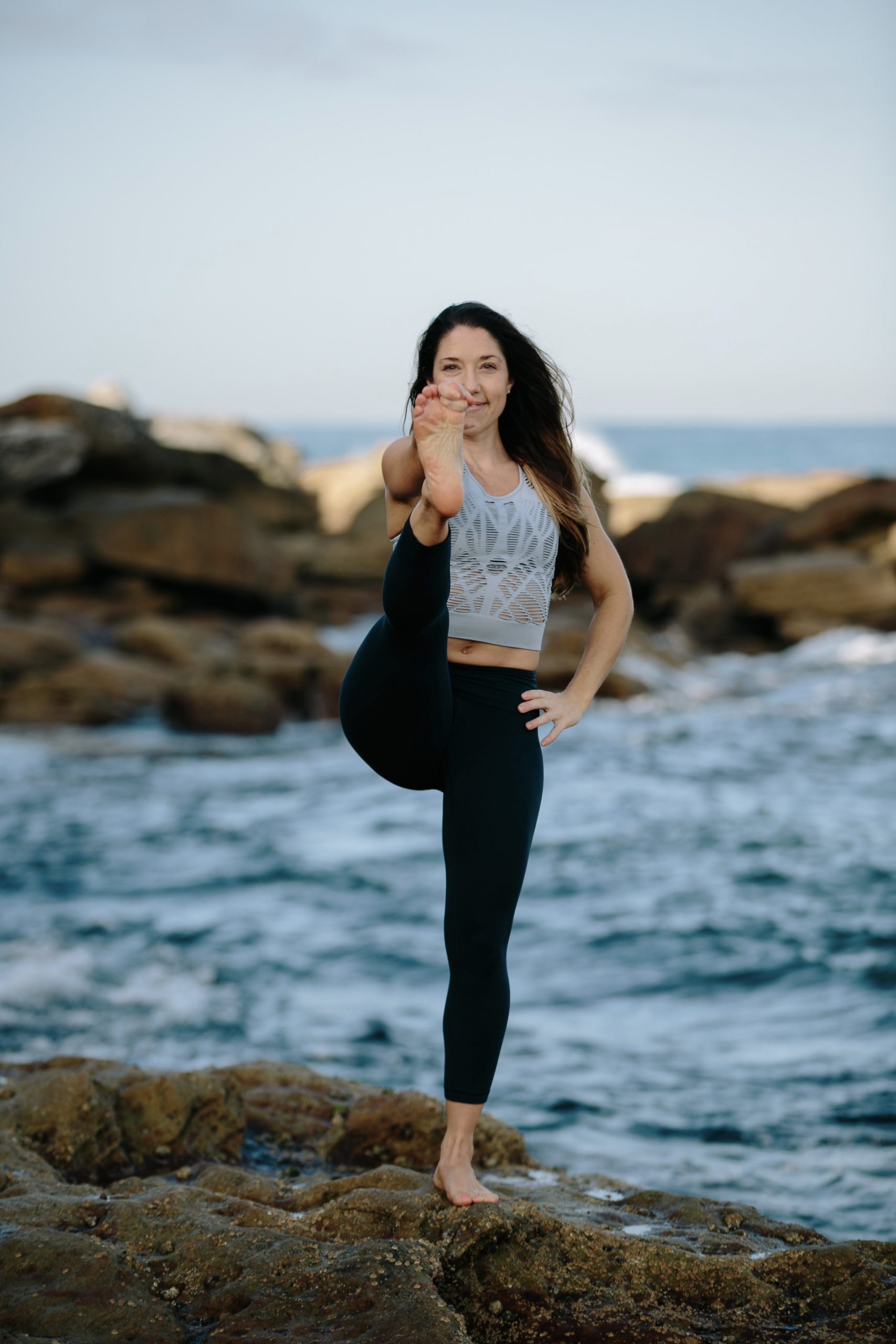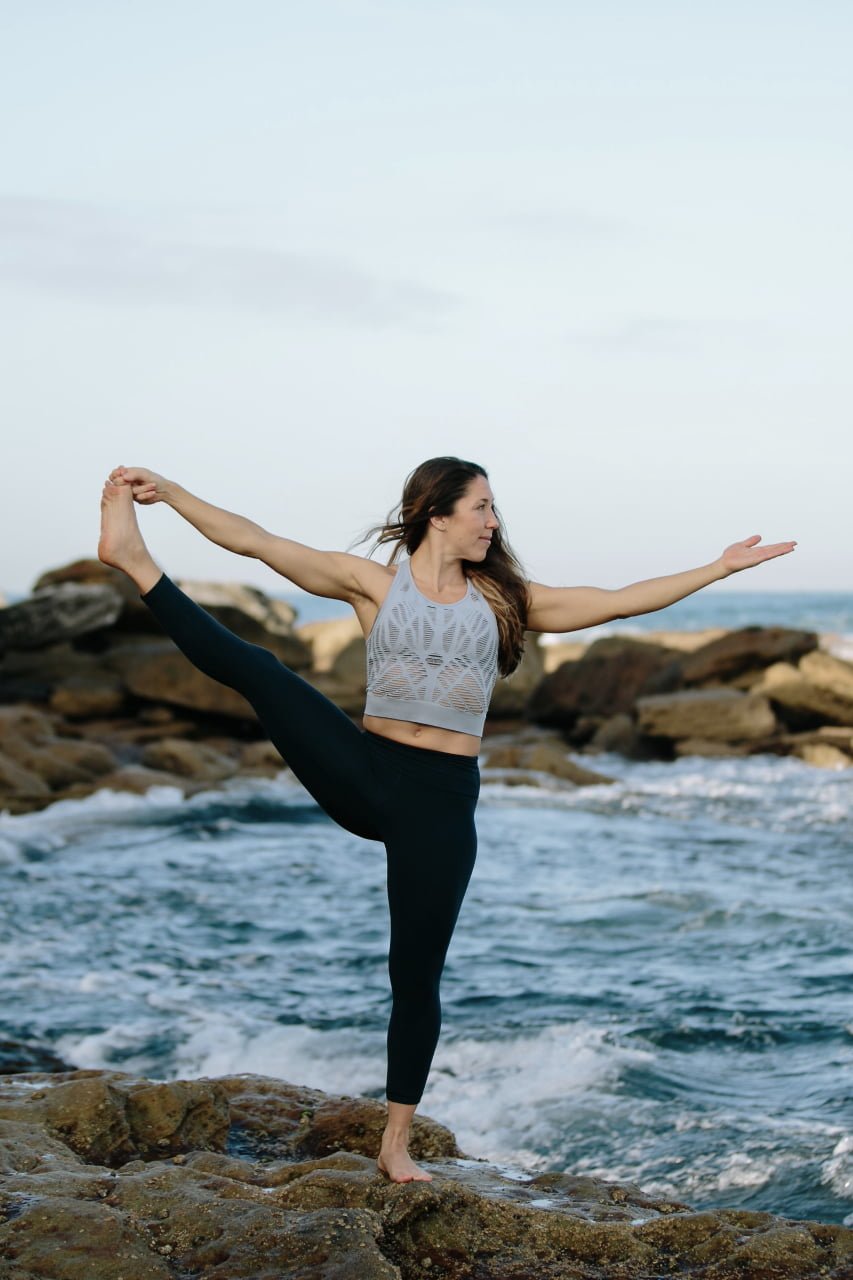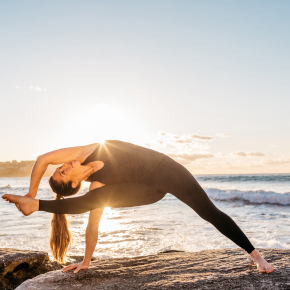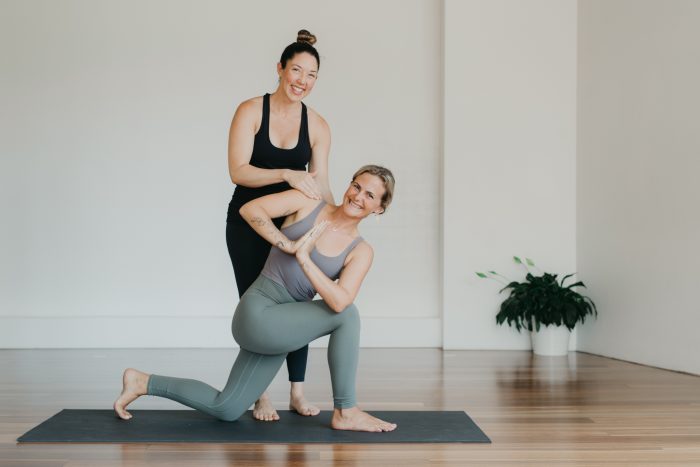Benefits of Balancing Poses – Tutorial: Hand to Big Toe Pose

Benefits of Balancing Poses
- Strengthens lower body, ankles, legs, glutes
- Supports good posture & core muscles
- Improves balance, steadiness
- Increases mindfulness & focus
- Challenges your balance & have fun!
The Goal of not falling over is indeed a rewarding aspect and a crucial part of the challenge of balancing on one leg…
Perhaps the aim is not so much about not falling over as it is cultivating mindfulness, focus, emotional composure and a good sense of humour – even when you get the wobbles.
Balancing poses help to improve steadiness in the ankle joints, strengthen your core and legs and enhance focus.
They also give us direct feedback to when we’re not being fully present and can transform patterns of mindlessness into mind-fullness.
Have you ever noticed when you’re trying to balance…the moment you zone out or have a thought for a split second…you get the wobbles, or fall out of the pose? It may be worth considering: where else do we have fuzzy focus in our lives, and how is that impacting the quality of our work, health or relationships?
The ability to be more fully present and focused in the moment with the task, breath, posture or person at hand undoubtedly makes us a better human, more conscious yogi, friend, colleague and human being.
HOW TO TUTORIAL: Hand to Big Toe Pose
Sanskrit Name: Utthita Hasta Padangustasana
Core Alignment
- Standing in ‘Tadasana’ – ground all 4 corners of feet down.
- Keep core engaged and spine extending upwards like a tall tree.
- Engage your quadriceps (front of thighs) – working towards straight legs (slight bend in knees to avoid hyper-extending any joints).
- Draw shoulders back and down, opening the chest and collarbones.
- Keep your eyes steady on the horizon. Head, neck and torso lengthen upwards, chin parallel with the floor.
Extending Leg Forward
- Hook your big toe with “peace fingers” and thumb.
- Extend leg forward and up creating an “L” shape, legs at 90 degrees or to a comfortable height: at hip, chest or eye level.
- Slightly point the toes (plantar flexing raised ankle) like you’re trying to hook the big toe over the peace-fingers – this helps to feel light and steady.
- Keep hips level (note: hip likes to hike up when we ‘beg’ to lift the leg too high) It’s better to lower the leg slightly to maintain neutral hips.
- Both legs may be slightly bent as long as the spine stays upright with core engaged.
- Keep shoulders pulled back, drawing extended arm back into socket.
- Lift leg, torso and crown of head upwards with focus, steadiness, lightness and ease.
- Face relaxed, smile 🙂
Focal Point
Place your eyes on horizon with a soft gaze. Hold the pose for 5-7 breaths.
Up-Level Hand to Big Toe
- Raise big toe higher, up to eye level (try and maintain neutral alignment in your hips).
- Open hip variation (similar to Trikonasana – triangle pose)
- Hold leg outstretched – for full quad and hip flexor strengthing pose, release big toe, placing both hands to hips.
- Or try holding foot with opposite hand – for twisted hand to big toe
To Modify
Both knees can be bent as much as needed. The most important part is to keep the spine upright, straight and tall.
- If your back is rounding, bend your knees or hold onto the knee (instead of your big toe) and work to straighten spine.
- Stand near a wall for support if your feeling slightly off balance (or anytime you’re experiencing dizziness or vertigo).
- Or try making the same shape first by laying flat on the ground, using a strap to hold your foot.
Join me on the mat for balancing poses, wobbles and all! For a schedule of public class details click here.
See you on the mat yogis!
X Namaste
By: Kat Clayton

Related Posts



